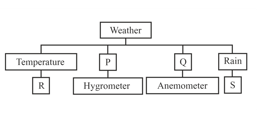EASY
7th Foundation
IMPORTANT
Earn 100
Read the given passage.
The land near the equator is colder than the land away from it. Near the equator, Sun’s rays fall vertically. As the latitude increases, the rays become more and more slanting. Vertical rays spread over a larger land area than slanting rays. Also, they pass through a thicker layer of the atmosphere which absorbs a large part of their heat. Hence, the land near the equator gets heated up lesser by the Sun than the land away from it, in a given time.
Some words have been italicised in the given passage. Select the incorrect statement regarding these.
The land near the equator is colder than the land away from it. Near the equator, Sun’s rays fall vertically. As the latitude increases, the rays become more and more slanting. Vertical rays spread over a larger land area than slanting rays. Also, they pass through a thicker layer of the atmosphere which absorbs a large part of their heat. Hence, the land near the equator gets heated up lesser by the Sun than the land away from it, in a given time.
Some words have been italicised in the given passage. Select the incorrect statement regarding these.
(a)The words colder and lesser need not to be replaced as they are correctly mentioned.
(b)Larger should be replaced by smaller.
(c)Thicker should be replaced by thinner.
(d)None of these
100% studentsanswered this correctly

Important Questions on Weather, Climate and Adaptations of Animals to Climate
EASY
7th Foundation
IMPORTANT
Refer to the given flow chart and select the option which correctly identifies P, Q, R and S.

| P | Q | R | S | |
| (A) | Relative humidity | Wind speed | Thermometer | Rain gauge |
| (B) | Wind speed | Relative humidity | Thermometer | Psychrometer |
| (C) | Relative humidity | Wind speed | Psychrometer | Rain gauge |
|
(D) |
Wind speed | Relative humidity | Thermometer | Rain gauge |
